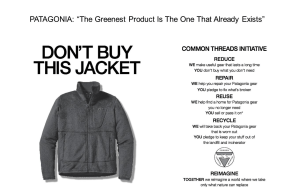If marketing leaders were looking for a wake-up call, they’ve received it, loud and clear. A recent Google Cloud survey found that 84% of consumers consider sustainability when making a purchase. Meanwhile, Kantar’s Sustainable Marketing 2030 report painted a candid picture of marketers still finding their footing. A significant 39% are taking mere baby steps on the path to sustainability – and customers are taking notice. This is particularly true in Europe, where data tells us that people want brands to be sustainable, but they don’t quite trust them to follow through.
No pressure, but there’s an urgent need to up the ante. This is a call to action for businesses. It’s time to move past empty “green” slogans and really show what’s going on behind the scenes. Only then can companies build true trust with their customers. So the big question we need to answer is this: are marketing practices able to keep up with this strong demand for honest, sustainable messaging?
Capability Gap: The Elephant in the Room
You’d think by now, sustainable marketing would be Marketing 101. That it would be woven into the best SEO, PPC, and organic social practices around the world. But Kantar’s report shows us a growing “capability gap.” Marketers are beginning to realize they don’t yet have the tools, skills, or even the internal resources to execute truly sustainable initiatives. This gap has ballooned from affecting 20% in 2021 to 35% this year. The realization is sinking in: recognizing a problem is one thing; solving it is another kettle of (sustainably caught) fish.
From KPIs to True Communication
There’s hope for marketers yet. Brands are incorporating sustainability into their marketing dashboards with far more enthusiasm than before. In 2021, only 26% had sustainability as a KPI. Fast forward to 2023, and that figure has jumped to 43%. Additionally, marketers are gradually shedding their hesitance to communicate their green initiatives. The fear of greenwashing accusations is taking a back seat, with 82% saying it’s time to be bolder in telling their sustainability story.
Action Stations: Here’s the Game Plan
So, where does the marketing industry go from here? It’s time to roll up those sleeves and get down to changing best practices in order to support clearer messaging around sustainability. Here’s how.
1. Be a Driver, Not a Passenger
Make a conscious choice as a marketer to lead the charge. Consider 2023 your time to align your brand’s sustainability goals with its overall business strategy. Whether that’s through your influencer marketing choices, content creation, or SEO, by taking the lead, you’re not just doing good—you’re making good business sense.
2. Dive into Your Data
Talk is cheap, but data speaks volumes. If your brand is serious about sustainability, prove it with numbers. Use data analytics to hone in on what your consumer genuinely cares about and ensure that you’re not just paying lip service to green ideals. It adds a layer of credibility that consumers appreciate and regulators are beginning to demand. Each marketing campaign you plan should have data to back it up.
3. Skill Up or Go Home
The sustainability world can be complex, and navigating it requires specialized skills. You and your marketing team should not only understand sustainability but excel at integrating it into broader strategies. That might mean attending workshops, hiring new talent, or even bringing in sustainability consultants. Think of it as adding strength to your suite of skills.
4. School Your Consumers
Brands like Patagonia have found success by practicing what they preach and educating their consumers with their marketing campaigns. Famously, they were doing this all the way back in 2011, with their “Don’t Buy This Jacket” campaign. The logic is simple: an informed consumer makes better choices. Whether it’s through blogs, social media, or interactive campaigns, educate your audience so they can align their purchasing habits with their values.

5. Transparency is King
In a world that’s increasingly skeptical about corporate motives, transparency can set you apart. Make your processes, benchmarks, and progress visible and easy to understand, with clear marketing and messaging around them. Not only is it ethical, but it also fosters trust and adds a layer of accountability that consumers and shareholders alike will appreciate.
The people have spoken loud and clear: “Go green or go home!” If you’re in marketing, you’ve got quite the journey ahead. Yet, it’s an exciting road trip full of chances to shine. What’s the key to success? Be flexible, be creative, and teach people why being eco-friendly matters. Are all marketers nailing the green game yet? Not completely. But we’ve revved the engine and the eco-friendly race is on. It’s a start we can all cheer for.


